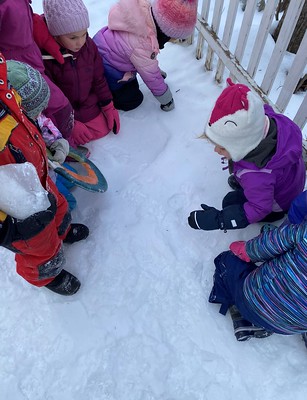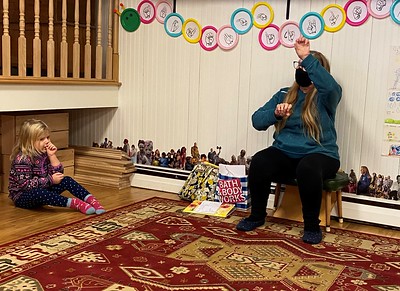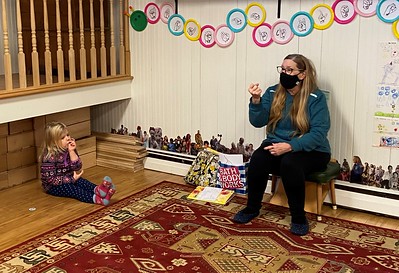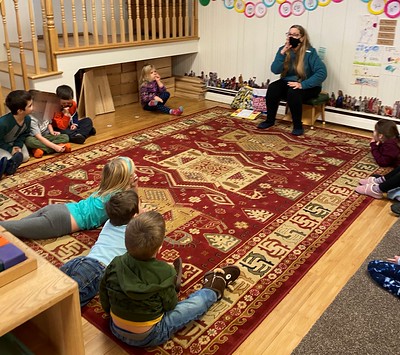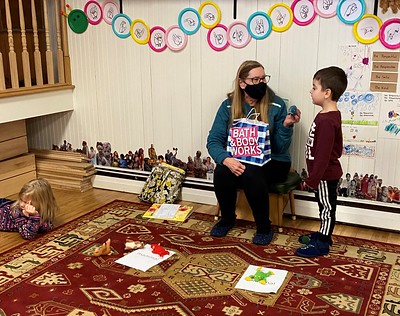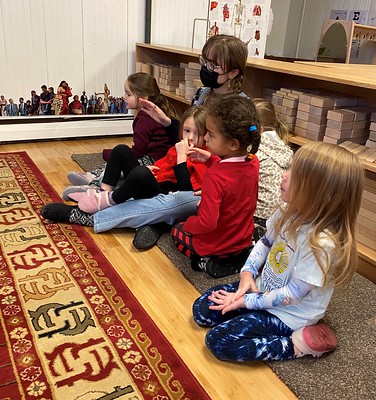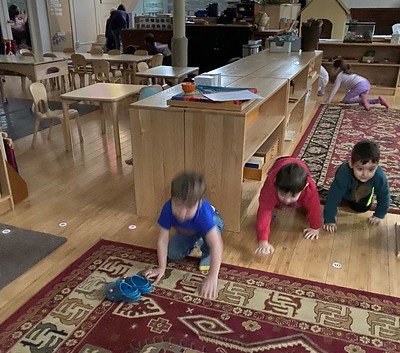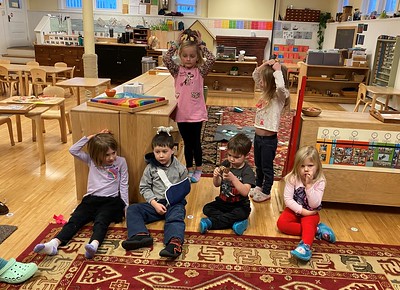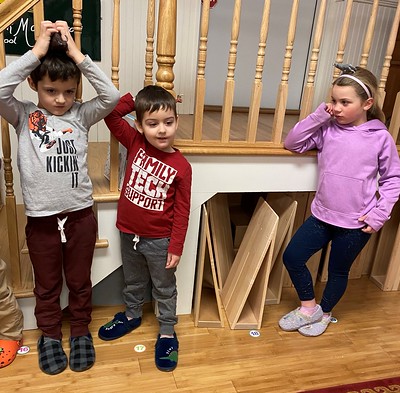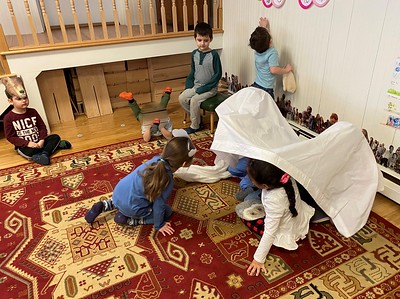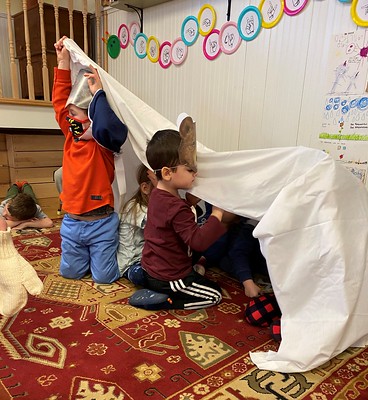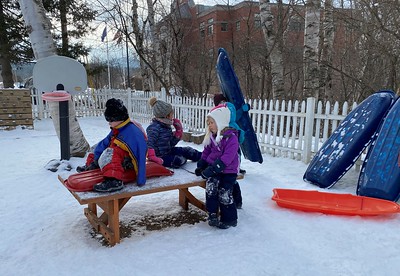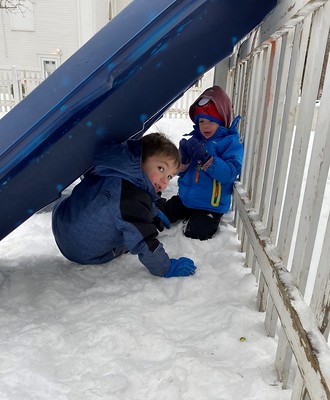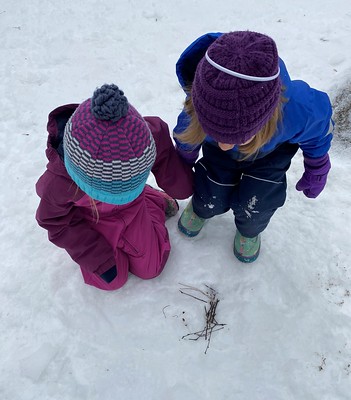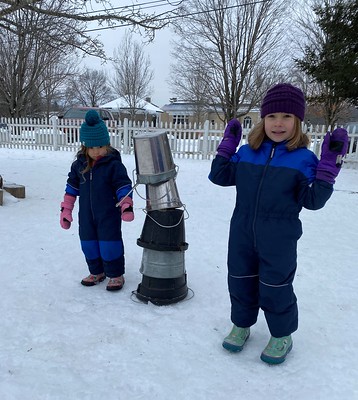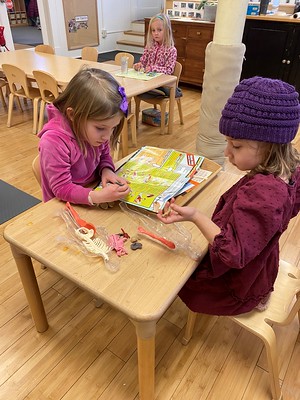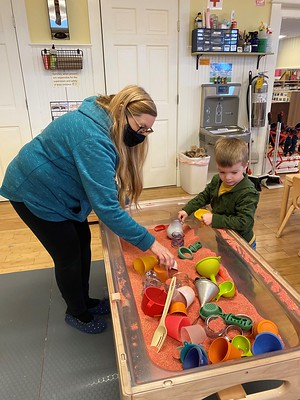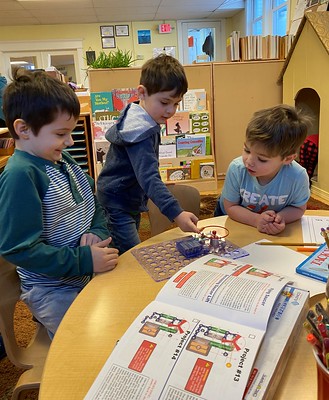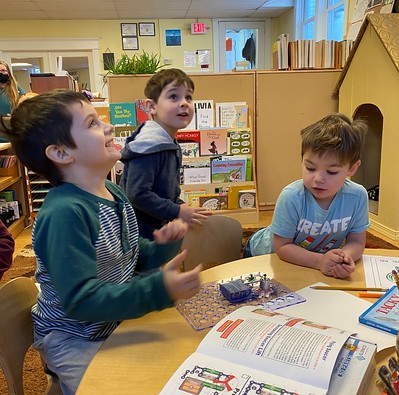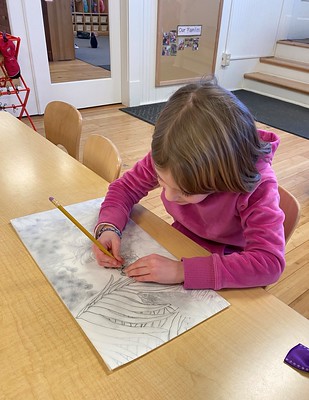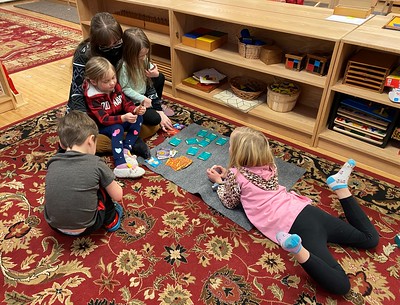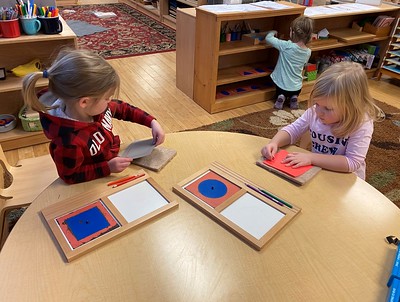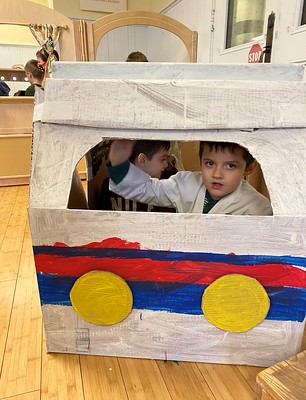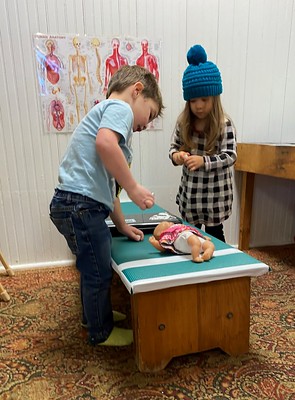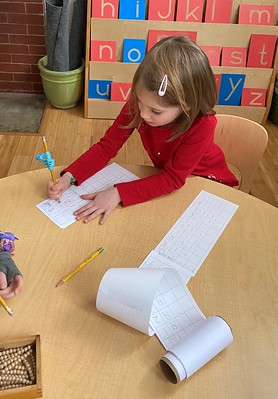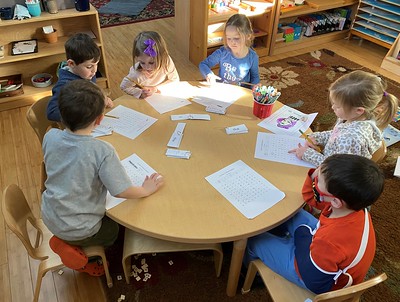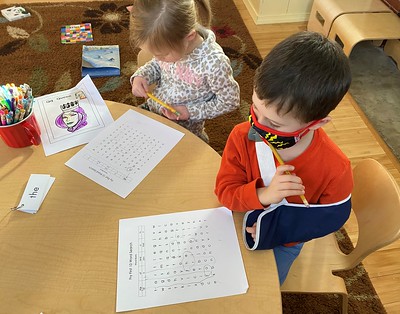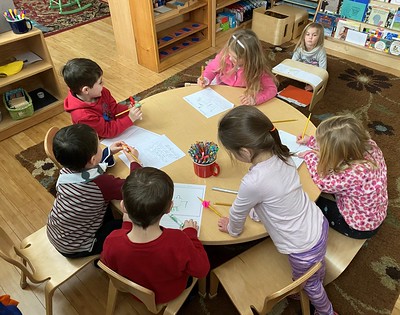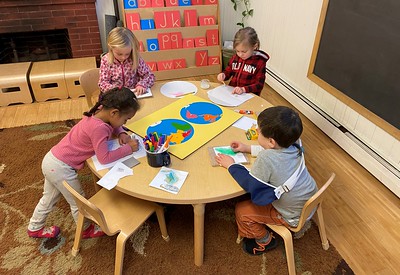Harold and his Purple Crayon introduced drawing lines to Monday students in the story by Crocket Johnson. We read Lines That Wiggle by Candace Whitman and The Line by Paula Bossio then watched a video where an artist demonstrated how to draw a portrait using one long line without picking up your pencil even once! Some artists gave it a try and discovered it was quite tricky to draw a whole picture using just one line.
Rose continued to review and introduce mammal signs. She did a fun activity where the children sorted some stuffed animals into groups. The children determined whether the animals had hair, four limbs, gave live birth, and nursed their babies or not to figure out if they were mammals or not mammals. We sang “Hurry, Hurry, Drive the Fire Truck” and “Sally the Camel Has 5 Humps.”
We watched videos of different animals walking. We observed how they moved their legs and learned the names for the different ways of moving. We observed a bear, which waddles like raccoons and skunks, who walk by moving both legs on one side at the same time, then both legs on the other. We tried it out and found it was kind of tricky to move that way. We then watched a deer walking, which is a diagonal or perfect walker, just like cats, dogs, foxes, and coyotes, who walk by alternating their feet. Most of us found this was the easiest way to move as it is the way humans move naturally when crawling and walking. We watched a mink moving, who is a bounder like fishers, otters, and weasels, moving both front feet then back feet. Finally we watched a rabbit galloping, who moves by placing their front feet down then hopping their back feet in front of their front feet, just like squirrels, mice, and groundhogs, so when we find their tracks in the snow, their big back feet are ahead of their little front feet prints. Some of us found this to be the hardest way to move.
The children had fun taking turns performing The Mitten by, Jan Brett.
It was a pretty chilly week with minimal sunshine but we did our best to stay warm running around, sledding, chopping up snow & ice, going on adventures, and looking for tracks.
We returned to discussing steps and strategies for problem solving. As an implementation site for the Pyramid Model, which we began this year, we were given some great materials to use in the classroom. First we looked at an emotional regulation scale, showing a child from calm to distressed and talked about taking breaths to send oxygen to the brain and help calm ourselves. The children then shared some examples of problems that might need to be solved. We read a story about the steps to follow to solve a problem and some solutions we could try.
The Medical Clinic was busy this week with so many patients getting exams, X-rays, vaccinations, and medical advice. I was told my heart was broken and would never be better again. It was a very sad day for this patient! Those nurses, doctors, and EMTs were very busy! They even had do dodge some wizarding spells when a Harry Potter invasion took over the clinic.
Kindergarten students chose their own math and literacy work. They did some sight word reading and a sight word word search. They listened to some addition and subtraction word problems, determined if it was an addition or subtraction problem, then used pictures, tally marks, fingers, rocks, flat glass marbles or counting in their heads to determine the solution to each problem.
Friday students did some skeleton dancing and were introduced to the names of the major bones on our bodies. We learned that all mammals (as well as reptiles, amphibians, birds, and most fish) have skeletons of bone (or cartilage) and they share the names. The head bone is always a skull, no matter what animal it belongs to, as is the femur, ribs, vertebrae, pelvis, etc. After several introductions to the names of the different bones the children took turns finding the bones on our skeleton, John. They identified the clavicle, vertebrae, femur, patella, pelvis, ribs, skull, and shoulder blades.

